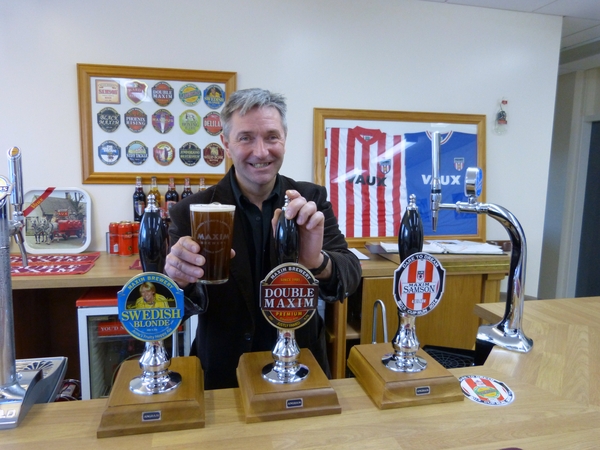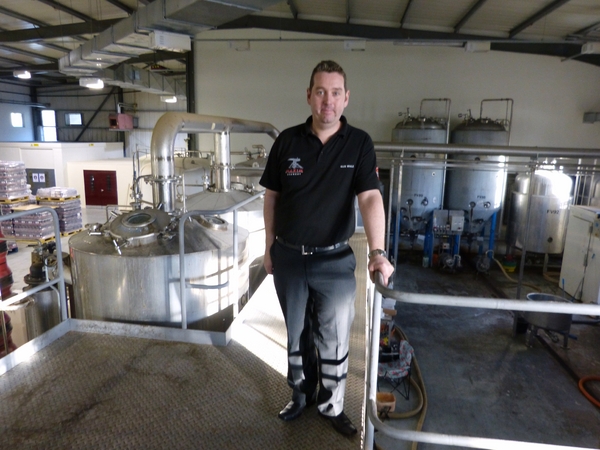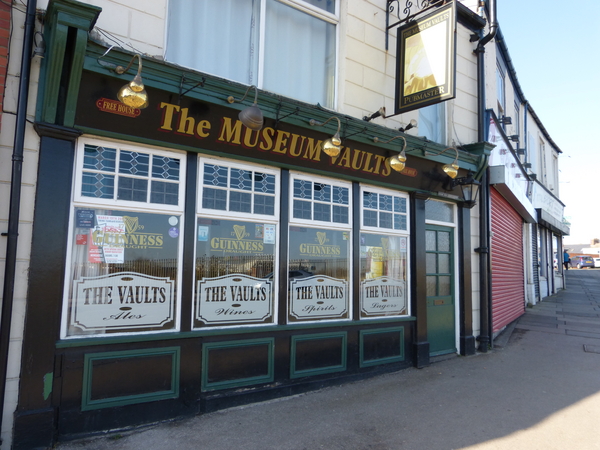Maxim back at the Double to avenge the tragic loss of asset-stripped giant Vaux
Added: Friday, March 21st 2014

There’s a large hole in the centre of Sunderland that’s a grim memorial to corporate greed and vandalism. The Vaux brewery once stood tall and proud there until it was asset stripped and closed in 1999.
Vaux was a mighty company. It rivalled Greene King and Marston’s as a large regional brewer. It was famous for its Double Maxim brown ale, a North-east speciality that pre-dated Newcastle Brown by more than 20 years.
Vaux owned Ward’s in Sheffield and between them they brewed half a million barrels of beer a year, owned 888 pubs and Swallow Hotels.
The two breweries were making profits of £25m each a year, but it was the pubs and hotels that attracted the attention of City vultures. The brewery was founded in 1837 by Cuthbert Vaux and passed through marriage to the Nicholson family.
But Vaux had become a PLC in 1927. By the 1990s, chairman Sir Paul Nicholson and managing director Frank Nicholson controlled only 2% of the shares and were in a weak position to fight the City institutions that owned the bulk of the business.
Vaux went into free fall in 1998 when a new chief executive, Martin Grant, and finance director Neil Gossage were appointed. The board agreed to change their stockbrokers and financial advisors to BT Alex Brown, a subsidiary of Deutsche Bank. Grant and Gossage recommended that the breweries should close with all the group’s shares transferred to Swallow Hotels.
Encouraged by Frank Nicholson, two senior executives at Vaux, Mark Anderson (pictured at top) and Doug Trotman, put together a management buy-out (MBO) that offered £75.5m for the breweries and 350 pubs. Grant and Co argued that £15m more would be made from closure. The anticipated money to be made from the sale of the real estate – hotels and pubs – and the land on which the breweries stood mattered more to the board than saving jobs and breweries rooted in their communities. Anderson and Trotman were told their bid was £5m short and in July 1999 the breweries closed.
The tenanted pubs were sold to Pubmaster -- advisors BT Alex Brown -- and eventually passed to Enterprise and Punch. Swallow Hotels were bought by Whitbread. The former Vaux directors pocketed enormous amounts of cash while 550 brewery workers lost their jobs. The loss to the local economies in Sunderland and Sheffield cannot be calculated on a human scale.

But Vaux has risen from the ashes. Mark Anderson, Doug Trotman and former head Jim Murray were determined to resurrect Double Maxim, Samson, Lambton’s and Ward’s Best Bitter. They launched the Maxim Beer Company in 2000 and bought the rights to the brands. At first they were brewed under licence only in bottled form but they kept the names alive in pubs and supermarkets in the North-east and Yorkshire.
There’s now a substantial brewery based in spacious buildings at Houghton le Spring just outside Sunderland. Anderson, Trotman and Murray were able to buy the former Scottish & Newcastle pilot brewery plant in Edinburgh for £70,000. A further £170,000 was spent on moving the kit to the new site and installing it, along with building work and electrics. The brewery opened in 2008.
It says a lot about the relative size of national and small regional breweries that the S&N pilot plant, used for trial brews, enables Maxim to brew up to the cut-off mark for Small Brewers’ Relief and lower rates of duty.
Jim Murray has now retired and the head brewer is Glen Whale (pictured in his brew house), ex S&N and – mention it quietly – a Newcastle United supporter: Vaux was a long-standing sponsor of Sunderland FC and the club’s shirts hang in the Maxim Brewery bar and reception area. Mark Anderson, Doug Trotman, Glen Whale and finance director Susan Moon raised the money to buy and establish the business.
Production is split between bottle and draught and Anderson says the cask side of the business is growing. Maxim sells draught beer via Coors and also direct to Wetherspoons, M&B and Punch. The brewery’s beers are available as far south as Sheffield and also in Durham, Hartlepool, Sunderland – naturally -- and York.
New beers, including Swedish Blonde, a 4.2% golden ale, and Maximus, a 6% stronger version of Double Maxim, have been added, along with seasonal beers. But Double Maxim (4.7%) remains the core brand in bottle and cask. It was launched in 1901 and named in recognition of Colonel Ernest Vaux who had led a Maxim gun detachment during the Boer War. It was increased in strength in 1938 and renamed Double Maxim to tackle the might of Newcastle Breweries and its Brown Ale on Tyneside.
Maxim has brought pride as well as famous brands back to Wearside. Back in the centre of Sunderland, the Vaux site was sold to Tesco for £13m but its plans have stalled. The site is now being turned in to a road, leading no doubt to the graveyard of lost dreams.
But in Houghton le Spring dreams have been turned into reality and Double Maxim is once again firing on all cylinders.
www.maximbrewery.co.uk
*Print: Publican’s Morning Advertiser 20 March 2014. Pictured below: the Museum Vaults in Silksworth Row, Sunderland, sells Maxim beers and stands opposite the former Vaux Brewery.






